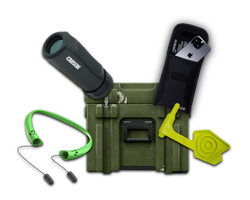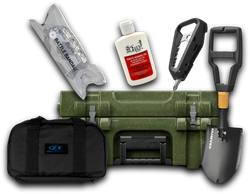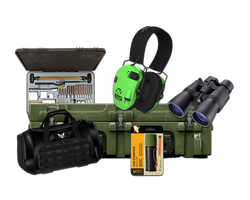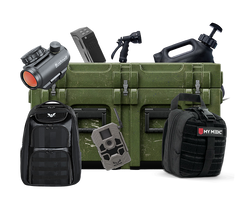How to Stay Warm in a Sleeping Bag: Essential Tips for Cold Weather Camping
Table of Contents
- Introduction
- Understanding Sleeping Bag Insulation
- Layering Techniques for Warmth
- Practical Tips for Keeping Warm
- Emergency Warmth Strategies
- Conclusion
- FAQ Section
Introduction
Picture this: you're nestled in your sleeping bag, the stars twinkling above, and the beauty of nature surrounds you. But instead of enjoying the tranquility, you're shivering uncontrollably, desperately wishing for warmth. Cold nights can turn a perfectly planned camping trip into a miserable experience. In fact, studies show that inadequate sleeping gear contributes to a significant percentage of discomfort among campers, especially in colder climates.
Understanding how to stay warm in a sleeping bag is not just a matter of comfort; it can be crucial for safety in the wilderness. As temperatures drop, the risk of hypothermia and frostbite increases, making effective insulation essential. This blog post aims to equip you with practical strategies and expert insights on keeping warm while you sleep outdoors.
Throughout this comprehensive guide, we will explore the science of sleeping bags, factors affecting warmth, layering techniques, and practical tips that can significantly enhance your camping experience. Whether you're a seasoned adventurer or a novice camper, these insights will empower you to tackle cold conditions with confidence. By the end, you'll gain a deeper understanding of how to stay warm in a sleeping bag and enjoy a restful night under the stars.
Understanding Sleeping Bag Insulation
The Science Behind Sleeping Bags
At the heart of every sleeping bag's effectiveness is its insulation. Insulation works by trapping air, which serves as a barrier against the cold. The more still air a sleeping bag can trap, the warmer it will keep you. There are various types of insulation materials, primarily categorized into two types: down and synthetic.
-
Down Insulation:
- Down feathers, usually from ducks or geese, provide excellent warmth-to-weight ratios and compressibility. However, they lose their insulating properties when wet, making them less ideal for damp conditions.
-
Synthetic Insulation:
- Made from polyester fibers, synthetic insulation retains warmth even when wet and dries faster. While generally heavier and bulkier than down, they are often more affordable and easier to care for.
Temperature Ratings Explained
Understanding sleeping bag temperature ratings can be misleading. Manufacturers often provide three ratings:
- Survival Rating: The lowest temperature at which you can survive.
- Comfort Rating: The temperature at which the average sleeper will be comfortable.
- Limit Rating: The lowest temperature that a sleeper can survive but may not be comfortable.
When selecting a sleeping bag, always check the manufacturer's temperature ratings and consider the conditions you'll be facing.
Layering Techniques for Warmth
The Importance of Layering
Layering is one of the most effective ways to trap heat and ensure warmth while sleeping. The principle is simple: each layer adds an additional barrier against the cold. Here are key layering techniques to consider:
-
Base Layer: A moisture-wicking base layer is essential. Avoid cotton, which retains moisture and can make you feel colder. Instead, opt for materials like merino wool or synthetic fabrics.
-
Mid Layer: A fleece or down jacket can provide additional insulation. The mid-layer traps warmth and can be removed if you get too hot.
-
Outer Layer: While in the sleeping bag, limit the outer layer to avoid compressing the insulation. A hat, neck gaiter, and warm socks will help retain heat.
Choosing the Right Sleeping Pad
A good sleeping pad is as crucial as the sleeping bag itself when it comes to staying warm. The ground can sap your body heat quickly, so consider these factors:
- R-Value: This measures the thermal resistance of the pad. Higher R-values indicate better insulation against the cold ground.
- Type of Pad: Closed-cell foam pads provide decent insulation and are lightweight, while inflatable pads can offer more comfort.
Additional Layering Tips
- Wear a Hat: A significant amount of heat escapes through your head. A warm hat or balaclava can make a noticeable difference.
- Use a Liner: A sleeping bag liner can add warmth and keep your bag clean. It also allows you to maintain a comfortable temperature without overstuffing your bag.
Practical Tips for Keeping Warm
Before You Sleep
-
Eat a Warm Meal: Consuming a hot meal before bedtime helps raise your body temperature and provides energy for warmth during the night.
-
Stay Hydrated: Proper hydration is vital. However, avoid drinking too much right before bed to minimize nighttime trips outside.
-
Avoid Snug Clothing: While it’s important to wear layers, avoid overly snug clothing that can compress insulation and restrict circulation.
In the Sleeping Bag
-
Hot Water Bottle: Fill a durable water bottle with hot water before you sleep. Placing this bottle near your feet will radiate warmth throughout the night.
-
Body Heat: If camping with a partner, share body heat by sleeping close together. Two bodies generate more warmth than one.
-
Move Around: Before settling in, do a few exercises to get your blood circulating. This can help warm you up before you even get into the bag.
During the Night
-
Adjust Layers: If you feel too hot, don’t hesitate to adjust your layers. It's better to have a slightly cooler start than to overheat and sweat, which can make you colder.
-
Stay Dry: Moisture can sap your heat quickly. If you get sweaty during the night, try to manage your layers to avoid trapping moisture.
-
Use a Tent or Tarp: Create a windbreak with your tent or tarp to retain heat and reduce wind chill. A small tent can also help by trapping more body heat.
Emergency Warmth Strategies
Chemical Warmers
Chemical hand warmers can be a lifesaver in extreme conditions. Just be cautious not to place them directly against your skin, as they can cause burns. Instead, tuck them into your sleeping bag or place them near your extremities.
Improvised Solutions
- Pine Boughs: If you're camping in a forested area, laying pine branches beneath your sleeping pad can create a barrier against the cold ground.
- Reflective Materials: Using a space blanket or reflective tarp beneath your sleeping pad can help retain heat by reflecting it back towards you.
Conclusion
Staying warm in a sleeping bag is not merely about having the right gear; it's about understanding how to optimize your setup and using practical strategies to maintain warmth. From choosing the right sleeping bag and pad to employing effective layering and emergency warmth techniques, each element plays a pivotal role in your comfort and safety.
As you prepare for your next outdoor adventure, consider how these strategies can enhance your camping experience. Embrace the community of fellow campers and share your experiences, tips, and tricks for staying warm. The outdoors is a beautiful place, and with the right preparation, you can enjoy its wonders, even in the chill of the night.
For those looking to gear up for their next camping trip, explore the curated tactical gear and survival tools available at Crate Club. With subscription options tailored to every level of outdoor enthusiast, you're sure to find the tools that enhance your outdoor experience. Don’t forget to check out the Crate Club Shop for the latest and greatest in tactical and survival gear.
FAQ Section
What is the best sleeping bag for cold weather camping?
The best sleeping bag for cold weather camping should have a temperature rating suitable for the conditions you expect. Look for bags with down insulation for warmth and compressibility or high-quality synthetic options for damp conditions.
How can I prevent my sleeping bag from getting damp?
To prevent your sleeping bag from getting damp, use a waterproof stuff sack, avoid cooking inside your tent, and ensure proper ventilation to reduce condensation.
Can I use a regular blanket instead of a sleeping bag?
While a regular blanket can provide some warmth, it won't offer the same level of insulation or wind protection as a sleeping bag designed for outdoor use. It's best to use a sleeping bag rated for the conditions you'll encounter.
Do I really need a sleeping pad?
Yes, a sleeping pad is crucial for insulation against the cold ground and for added comfort. It helps retain heat and prevents your body heat from escaping into the ground.
Is it better to sleep in layers inside my sleeping bag?
Yes, sleeping in layers can help you adjust your warmth based on the conditions. However, be careful not to compress the insulation of your sleeping bag too much, as this can reduce its effectiveness.
Share this article



